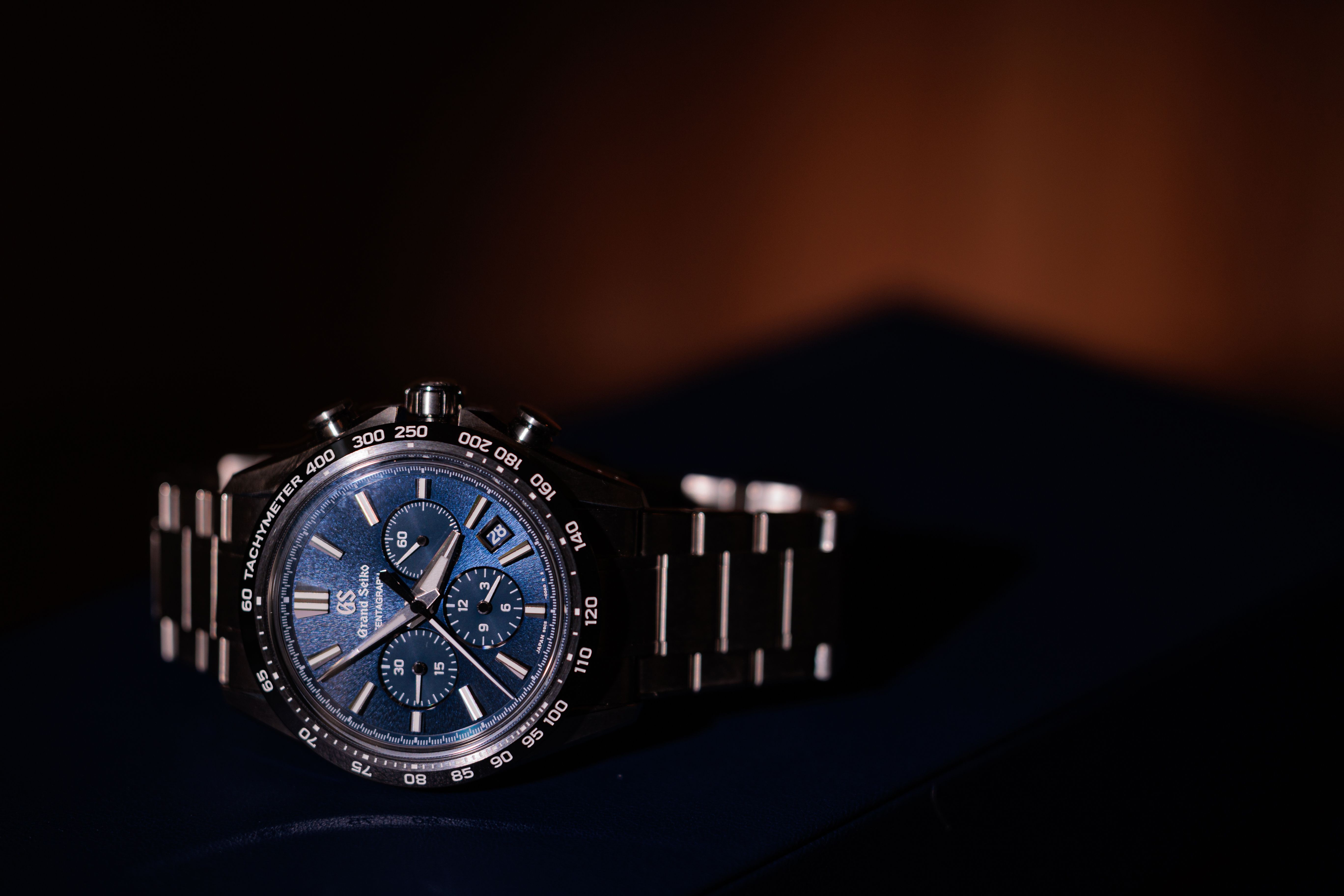The Grand Seiko Ginza Museum: An Immersive Journey Through Japanese Watchmaking History
The Grand Seiko Ginza Museum, located in the heart of Tokyo's prestigious Ginza shopping district, offers visitors a comprehensive look at the evolution of timekeeping and the rich history of Seiko's relentless pursuit of horological excellence that made it one of Japan's most iconic brands worldwide.
The museum's overarching theme of "from time indicated by nature to human-made time" traces the progression from humanity's early dependence on observing natural cycles like the sun's position to tell time, to the precision of modern mechanical watches.
A Timeline:
Opening of the Seiko Institute of Horology
1977 : January: Start of preparations for the opening of the Seiko Institute of Horology in a room of the Administration Department within the Seikosha administration office in Taihei-cho, Sumida Ward
1978: From autumn: Expansion to 1st and 2nd floors and expansion of the number of authentic timepieces and materials
1979: February 6: Explanation of the background and concept behind the opening of the Seiko Institute of Horology, provided by President Kentaro Hattori at a roundtable discussion with experts
1980: From autumn: Transfer to Seikosha's new building and temporary opening after renovation of 1st and 2nd floors
1981: June 10 (Time Memorial Day): Official opening
Limited opening due to being located inside the Seikosha Factory
Established as a 100th-anniversary project with the aim of gathering, preserving, and studying authentic timepieces and materials related to the theme of "time and timepieces"
Transfer from Seikosha and public opening
1996: Transfer to Shinohashi, Koto Ward Continued collection and classification of authentic timepieces and materials
1997: Beginning of public access to documents
1999: Transfer to Higashi-Mukojima, Sumida Ward
Opening to the public (by advance reservation)
2003: Renewal of the 1st and 2nd floors
Opening of a permanent exhibition explaining the "Evolution of Time"
Renewal as The Seiko Museum
2012: April 1: Reopening
The name changed to The Seiko Museum
Serving as a base for disseminating information on Seiko to promote the brand and increase brand value
2019: December 29: Closed for transfer preparation
Opening of The Seiko Museum Ginza in the location of the company's founding
2020: August 19: Reopening
Transfer to Ginza, Chuo Ward
The name changed to The Seiko Museum Ginza
Aiming to convey Seiko's history and brand story from Ginza
THE SEIKO MUSEUM GINZA
2021: 40th anniversary of the museum's opening
Did you know there were 18,000+ visitors at the Grand Seiko Ginza Museum this year and 1200+ workmen? This goes to show the prominence of the brand across Japan.
An introduction to the different floors of the museum:
Each floor is marked with a symbol based on the motif of a clock hand that represents the theme of that floor's exhibits. The variety of ideas expressed with a single clock hand is a manifestation of the worldview of The Seiko Museum Ginza.
Here are what the symbols represent:
Are you ready for your visual journey? Let’s begin!
The B1 Floor: This floor focuses on the extreme times and delves into Seiko’s sports timekeeping and timepieces.
1F- This floor revolves around the theme of the Beginnings of Time and showcases the reception and museum shop.
2F- This floor revolves around the theme of “Always One Step Ahead of the Rest and is dedicated to Kintaro Hattori.
Credited with being the "King of Timepieces in the East," Kintaro Hattori was instrumental in propelling Japan's modern watchmaking industry. In 1892, he established the Seikosha watch factory to realize his lifelong dream of natively producing high-quality timepieces in Japan rather than importing them.
Despite the devastating 1923 Great Kanto earthquake destroying his facilities, Hattori's resilience and dedication to his customers facilitated Seiko's swift recovery.
His tireless efforts at implementing the latest production machinery and techniques paid off with innovations like Seiko's first wristwatch in 1913 and Japan's first TV clock in 1956.
3F- This floor revolves around the theme of the history of time and timepieces inspired by nature to Human-made time.
Humans have endeavored to measure time for millennia, with the earliest known timekeeping devices being obelisks and sundials used in ancient Egypt around 3500 BCE. By observing the movement of the sun and shadows cast by erected stones or poles, Egyptians were able to roughly estimate daytime hours. The sundial's origins marked humankind's first efforts to bring regularity to time's passage by harnessing natural phenomena.
Subsequent civilizations in China, Greece, and Rome improved sundial technology and developed ingenious devices like water clocks, candle clocks, hourglasses, and astrolabes to track time's elapse even at night. The water clock, first used in Egypt around 1400 BCE, measured intervals through the steady flow of water through a vessel. Candle clocks, developed in China around 500 CE, used candles marked at intervals to burn through set periods. The hourglass, invented in the early Middle Ages, used sand granules funneling through a narrow midpoint to gauge elapsed time.
The Advent of Mechanical Clocks
A major shift occurred in Medieval Europe with the proliferation of mechanical clocks. As Christianity spread across Europe, churches and monasteries began routinely ringing bells to signify set prayer times. Around 1300 CE, advances in gearwork enabled early tower clocks driven by hanging weights to automatically ring bells at fixed intervals across many churches simultaneously, revolutionizing public timekeeping.
While these early mechanical clocks had inaccuracies of 30 minutes to an hour daily, they represented significant progress by mechanizing timekeeping. The prominent ringing of bells standardized time measurement across communities. In 1583, Galileo Galilei's discovery of the pendulum's isochronism, demonstrating its fixed swing period, paved the way for pendulum clocks and dramatically improved accuracy.
Miniaturization for Personal Use
The development of the mainspring and balance wheel enabled clocks to become smaller and portable. This miniaturization shifted timepieces from large public clocks to smaller household clocks and personal watches. The first pocket watches appeared in the 16th century, while wristwatches came into vogue in the early 20th century.
Maritime Timekeeping and Empires
Precise timekeeping was also crucial for navigation on the open seas. Without accurate time measurement, ships drifted off course. In 1735, British clockmaker John Harrison created the marine chronometer, allowing ships to precisely track longitudinal positions. This enabled the British Empire's domination of global trade and expansion across the oceans during the 19th century.
Japan Adopts Western Timekeeping
In Japan's Edo period between the 17th and 19th centuries, traditional Japanese clocks called wadokei were widely used. These intricate clocks incorporated adjustable mechanisms to account for Japan's seasonal time system which divided days into six segments of varying length depending on the season.
With the Meiji Restoration in 1868, Japan broadly adopted the Western clock-based time system. As demand rose for Western-style clocks, visionary entrepreneur Kintaro Hattori steadily built his watchmaking business which would later become Seiko.
4F: This floor is dedicated to the history of Seiko’s technological innovations over the years.
Of particular interest is an extensive collection of Grand Seiko watches that demonstrates the brand's evolution from its first model in 1960 to modern innovations like Spring Drive and hi-beat movements.
Interactive exhibits let visitors experience the meticulous assembly process used by seasoned craftsmen at the Shizukuishi studio to construct each Grand Seiko by hand.
5F: The last floor is dedicated to the diversity of time created by Seiko.

More about what makes this Museum a must-visit…
A serene tree mural symbolizes the natural world that has long inspired Grand Seiko's aesthetic. For a hands-on view of watchmaking history, the museum's full-scale replica of the famous Wako building's clock face lets you observe the intricate inner workings of this Tokyo timekeeping icon up close.
The Wako clock tower
The current clock tower, designed by architect Jin Watanabe for K. Hattori & Co., Ltd. (the present-day Wako specialty store), was built in June 1932. This structure, which looks down over the Giza 4-chome intersection with elegant, curved surfaces forming a gentle arc, is an example of the neo-Renaissance style of architecture. The clock dials on each of the four sides of the tower face almost exactly to the north, east, south, and west. The tower is 9 meters high, each clock dial is 2.4 meters in diameter, the minute hand is 1.17 meters long and the hour hand 0.75 meters long.
Although the rooftop of Wako is normally not accessible, making it difficult to get a close look at the clock tower, The Seiko Museum Ginza has a full-scale replica of one of the clock dials on display on the first basement floor. This replica has been on display since the days when the museum was located in Higashi-Mukojima and has long been a popular spot for people to take commemorative photographs of their visit to The Seiko Museum. Come and see for yourself just how big the dial and clock hands are.
By extensively covering Seiko's journey from Kintaro Hattori's early entrepreneurial efforts to Grand Seiko's global status as a luxury watchmaker today, the Grand Seiko Ginza Museum provides an immersive experience into the fascinating world of timekeeping and Seiko's story.

































